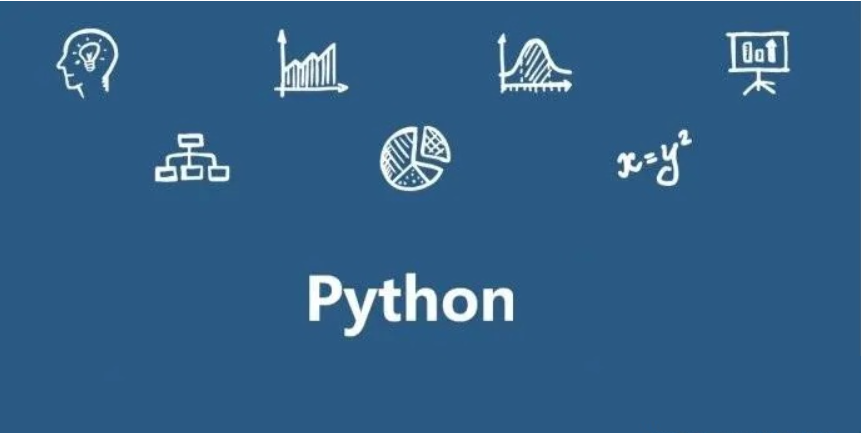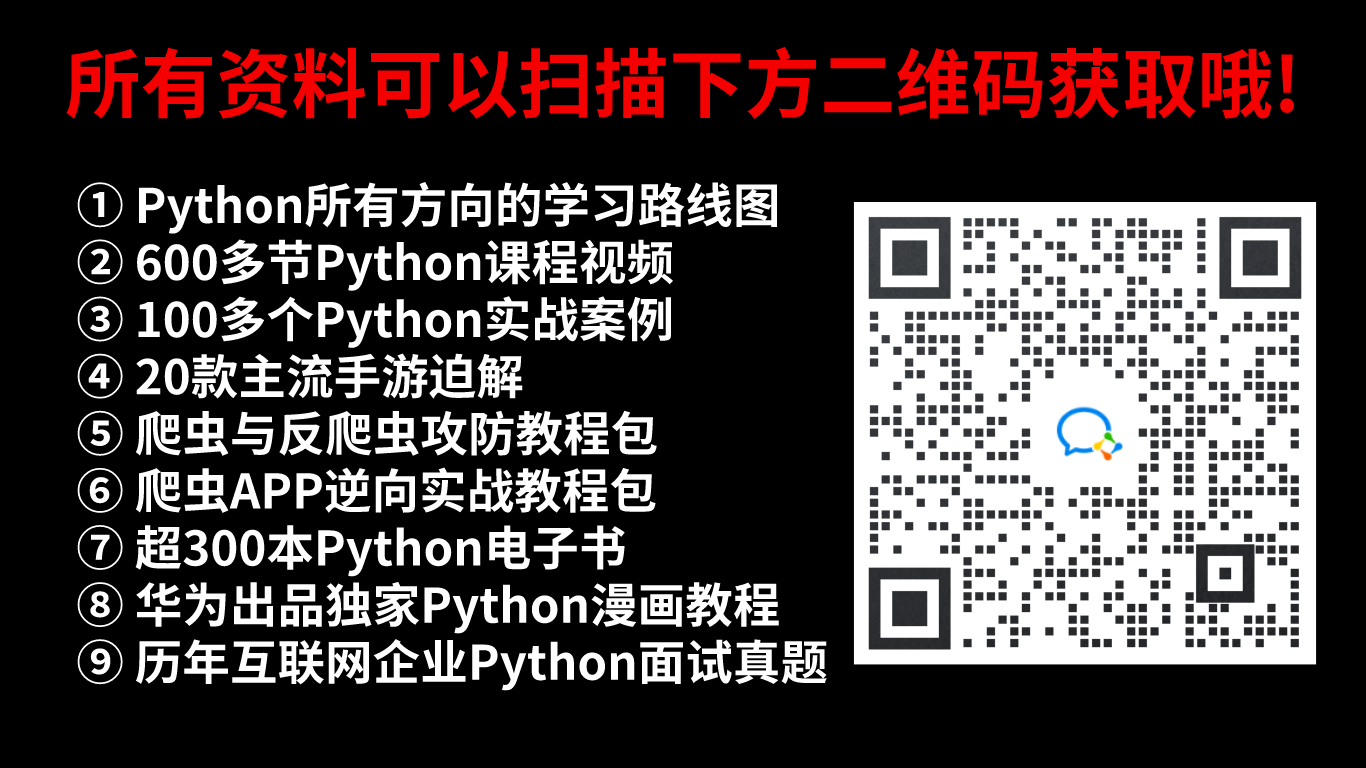At present, python can be said to be a very popular programming language, with a wide range of applications, high wages, and excellent future development.
How should you learn Python? I started learning Python from scratch, and I would like to share with you my ideas and methods for learning Python. It is difficult to achieve the desired effect by blindly buying books, reading books and watching videos, and you may even think of giving up in the middle stage.
Python is an open source, free, and universal scripting programming language. It is easy to use, powerful, and adheres to "minimalism."
Python class libraries (modules) are extremely rich, which makes Python almost omnipotent. Whether it is traditional Web development, PC software development, Linux operation and maintenance, or the current hot machine learning, big data analysis, and web crawlers, Python can do it. .
This set of basic Python tutorials is not a textbook and does not play with concepts. Instead, it strives to be colloquial and popular so that readers can get started as soon as possible.
If a child is interested in learning Python, please guide him to read the first half of this tutorial. This is the basis and can reduce the cost of learning. If you want to fully master Python programming and be competent in actual project development in the enterprise, then you should learn this step by step. All chapters of the tutorial.
Thousands of hard work, just for the masterpiece; strive for excellence, consider every step; this kind of tutorial, you will fall in love with it at one glance.
Front row tip: There are CSDN exclusive Python benefits at the end of the article
Article directory
-
-
- Chapter 1 Quick Start with Python
- Chapter 2 Python programming environment setup
- Chapter 3 Variable Types and Operators
- Chapter 4 Lists, Tuples, Dictionaries and Sets
- Chapter 5 Common methods of Python strings
- Chapter 6 Python Process Control
- Chapter 7 Python Process Control
- Chapter 8 Python Classes and Objects
- Chapter 9 Special Members of Classes (Properties and Methods)
- Chapter 10 Python exception handling mechanism
- Chapter 11 Python modules and packages
- Chapter 12 Python File Operation (I/O)
- CSDN exclusive benefits
-
Chapter 1 Quick Start with Python
1. What is a programming language?
2. The difference between compiled languages and interpreted languages
3.What is Python?
4.What are the advantages and disadvantages of Python?
5. To learn Python, no programming knowledge is required!
6. What can you do by learning Python? What are the application fields of Python?
7. How to learn Python to become a master?
8.The difference between Python 3 and Python 2
9.Python 2.x and Python 3.x, how should beginners choose?
10. How to automatically convert Python 2.x code into Python 3.x code?
11. As a programmer, how can you keep up to date with the latest changes in Python?
12.What language is used to implement the bottom layer of Python?
13. Understand Jupyter Notebook and you have surpassed 90% of Python programmers
Chapter 2 Python programming environment setup
1. Install Python on Windows
2. Install Python on Linux
3. Install Python environment on Mac OS
4.python is not recognized as an internal or external command solution
5. How to run a Python program?
6. First Python program
7.What is IDE (Integrated Development Environment)?
8. What are the Python IDEs and which one is suitable for beginners?
9. How to use Python IDLE (including common shortcut keys)
10.PyCharm download and installation tutorial
11.PyCharm runs the first Python program
12.Python Eclipse+PyDec download and installation tutorial
13.Eclipse+PyDec runs the first Python program
14.Python VS Code download and installation tutorial
15.VS Code runs the first Python program
16.Python Visual Studio download and installation tutorial
17.Visual Studio runs the first Python program
18.Python annotations
19.Python indentation rules (including shortcut keys)
20.Python coding specifications (PEP 8)
21. After reading this article, thoroughly understand the importance of Python coding standards
22.Python identifier naming convention
23.Python keywords (reserved words)
24.Python built-in functions
Chapter 3 Variable Types and Operators
1.Definition and use of Python variables
2.Python integer type (int)
3.Python decimal/floating point number (float)
4.Python complex type (complex)
5.Why are there errors in Python floating point types?
6.Python strings
7.Which encoding format is used for Python strings?
8.Python bytes
9.Python bool Boolean type
10. Python initializes variables and does not necessarily open up new memory!
11.Python input() function: Get the string input by the user
12. Advanced usage of Python print() function
13.Python format string
14.Python escape characters
15.Python data type conversion
16.Python arithmetic operators
17.Python assignment operator
18.Python bitwise operators
19.Python comparison operators
20.Python logical operators
21.Python ternary operator
22.Python operator precedence and associativity
Chapter 4 Lists, Tuples, Dictionaries and Sets
1. What is a sequence? Detailed explanation of Python sequences
2.Python list (list)
3. Add elements to Python list list
4. Python list delete elements
5.Python list list modification elements
6.Python list list to find elements
7. Combined with examples, let’s analyze the Python list in depth!
8.Python range() quickly initializes a list of numbers
9.Python list list implements stack and queue
10. Detailed explanation of Python tuple
11.The difference between Python tuples and lists
12.What is the underlying implementation of Python lists and tuples?
13.Python dict dictionary
14. Basic operations of Python dict dictionary
15. Complete guide to Python dict dictionary method
16.Python uses dictionary to format strings
17.Python set collection
18. Basic operations of Python set collection
19.Python set collection method
20.Python frozenset collection
21. Understand Python dictionaries and sets in depth, and see their essence at a glance!
22. Detailed explanation of Python deep copy and shallow copy
Chapter 5 Common methods of Python strings
1.Python string concatenation (including string concatenation numbers)
2. Python intercepts strings
3.Python len() function: Get the length or number of bytes of a string
4.Python split() split string method
5.Python join() merge string method
6.Python count() counts the number of occurrences of a string
7.Python find() detects whether a string contains a substring
8.Python index() detects whether a string contains a substring
9.Python ljust(), rjust() and center() methods
10.Python startswith()和endswith()
11.Python string case conversion
12.Python removes spaces from strings
13.Python format() formatted output method
14.Python encode() and decode() methods
15.Python dir() and help()
Chapter 6 Python Process Control
1.Python if else conditional statement
2. Python if else requirements for indentation
3.Python if statement nesting
4.Python pass
5.Python assert assertion
6. How to use assert reasonably and never mix it with if!
7.Python while loop statement
8.Python for loop
9. Else usage in Python loop structure
10.Python loop nesting
11.Python nested loop to implement bubble sorting
12.Python break: jump out of the current loop body
13.Python continue: Directly execute the next loop
14. Teach you a trick to completely say goodbye to the death (infinite) cycle!
15. Python derivation, quickly initialize various sequences!
16.Python zip function
17.Python reversed function
18.Python sorted function
Chapter 7 Python Process Control
1.Python if else conditional statement
2. Python if else requirements for indentation
3.Python if statement nesting
4.Python pass
5.Python assert assertion
6. How to use assert reasonably and never mix it with if!
7.Python while loop statement
8.Python for loop
9. Else usage in Python loop structure
10.Python loop nesting
11.Python nested loop to implement bubble sorting
12.Python break: jump out of the current loop body
13.Python continue: Directly execute the next loop
14. Teach you a trick to completely say goodbye to the death (infinite) cycle!
15. Python derivation, quickly initialize various sequences!
16.Python zip function
17.Python reversed function
18.Python sorted function
Chapter 8 Python Classes and Objects
1. Python object-oriented
2.Python class: define class
3.Python init()structuring method
4.Creation and use of Python class objects
5.Python self
6.Python class attributes and instance attributes
7.Python instance methods, static methods and class methods
8.Python class calls instance method
9. Why is it said that Python classes are independent namespaces?
10. What is a descriptor? Detailed explanation of Python descriptors
11.Python property()
12.Python @property decorator
13.Python packaging
14. Explore the underlying implementation principles of Python encapsulation
15.Python inheritance mechanism
16. In a subclass, how does Python find the attributes and methods of the parent class? (In-depth reveal)
17.Python parent class method rewriting
18. How to use Python inheritance mechanism to improve development efficiency?
19.Python super()
20. Remember, super() can only be used in new-style classes!
21. Use super(), don’t step on these “pits”!
22.Python slots
23.Python type() dynamically creates classes
24.Python MetaClass metaclass
25.How does the bottom layer of Python implement the MetaClass metaclass?
26. What is polymorphism, detailed explanation of Python polymorphism and usage
27.Python enumeration class
28.[Python project practice] Implementing search engines using object-oriented ideas
Chapter 9 Special Members of Classes (Properties and Methods)
1.Python new
2.Python repr
3.Python del()
4.Python dir()
5.Python dict
6.Python setattr、getattr、hasattr
7.Python issubclass and isinstance
8.Python call()
9. What is operator overloading? What are the overloadable operators in Python?
10.Python overloaded operators to implement custom sequences
11.Python iterator
12. [Python project practice] Iterator implements reverse order output of strings
13.Python generator
14. More advanced generator usage in Python!
15.Python @function decorator
16. Use examples to learn more about decorators!
Chapter 10 Python exception handling mechanism
1.What is exception handling
2. Why must you learn Python exception handling mechanism?
3.Python try except
4. In-depth analysis of the underlying implementation of Python exception handling mechanism
5.Python try except else
6.Python try except finally
7. An article to review the entire Python exception handling mechanism
8.Python raise
9.Python sys.exc_info() obtains exception information
10.Python traceback module: obtain exception information
11.How to customize an exception class in Python?
12. Correctly use Python exception handling mechanism
13.Python uses the logging module to debug the program
14.Python IDLE debugger
15.Python assert debugger
Chapter 11 Python modules and packages
1.What is a module
2.Python import import module
3.Python custom module
4. How should I introduce a module name that contains spaces or starts with a number?
5.Python name=='main'Is this the effect?
6.3 ways to import modules in Python
7.The essence of Python import module
8.Python __all__ variable
9.Python package: a folder that stores multiple modules
10.Python creates packages and imports packages
11.Python init.py action
12.Python view module method
13.Python doc
14.Python file
15. Python third-party library (module) download and installation
Chapter 12 Python File Operation (I/O)
1. What is a file path and how to write a file path in Python?
2.Python absolute path and relative path
3.Basic operations on Python files
4.Python open
5. What is the difference between opening a file in text format and binary format?
6.Python read
7.Python readline()和readlines()
8.Python write和writelines
9.Python close
10.Python seek and tell
11.Python with as
12. What is a context manager? Learn more about the Python with as statement
13.Python pickle module
14.Python fileinput module: read multiple files line by line
15.Python linecache module usage: Randomly read specified lines of files
16.Python pathlib module
17.Python os.path module
18.Python fnmatch module
19.Python uses the os module to operate files and directories
20.Python tempfile module: generate temporary files and temporary directories
CSDN exclusive benefits
Finally, I would like to thank everyone who reads my article carefully. Reciprocity is always necessary. Although the following information is not very valuable, you can take it directly if you can use it:
